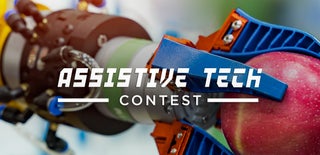Introduction: Newspaper Page Separator
During this holiday season, I was talking to my Grandma about what activities have become difficult for her as she has gotten older. Among a list of activities was turning the pages of a newspaper. The arthritis in her hands make it hard for her to separate the pages.
After talking to her, I wanted to make a tool that could help her separate the pages. After brainstorming and testing multiple designs, I came up with a simple tool that quickly and easily separates newspaper pages. I hope this Instructable is helpful and can help make the life of some one you know a little bit easier.
Supplies
Tools:
- 3D printer
- Alan wrench/screw driver/ torx driver (depending on screws used)
Materials:
- 3-5 rubber bands
- 3 screws/bolts (I used 1/2" 8-32) and 3 nuts (I recommend lock nuts)
- Hard 3D printer filament (PLA, PETG, ABS, etc.)
- Flexible filament (TPU, Ninja flex, etc.) -- This one is optional but highly recommend
Step 1: Print the Parts
Attached below are the STL files to print the main body and grips on the page turner. Top_P1 , Top_P2, and Bottom should all be printed in a hard filament, I used PETG but also tested in PLA. If you have a flexible filament available (I used TPU) print TopGrip-Flexible and BottomGrip-Flexible. If you do not have a flexible filament, instead of printing Top_P2 print TopP2-Band.
If you need to adjust the CAD model I will attach the Solidworks files at the end of the Instructable.
Step 2: Assemble the Main Body
Connect the two larger pieces, Top_P1 and Bottom, at the middle using one of the screws. Then attach the small piece, Top_P2, to Top_P1 as shown in the picture. Make sure to leave a little bit of space between the nut/screw and the plastic (do not tighten screw all the way). This will later help hold rubber bands in place. Finally, add the third screw to the middle hole as shown, once again leaving a little bit of space.
Step 3: Add the First Rubber Band
The first rubber band is to keep the tool open so that it only needs to be squeezed to work and will open on its own. Take a rubber band and put it through the hole in the handle of the bottom piece. Then loop it around the screw that is not a pivot point on Top_P1 as shown in the picture.
Step 4: Add the Second Set of Rubber Bands
This set of rubber bands helps to make the top piece move back into position as well as helps a little with grip strength.
The first rubber band should go through the hole at front on the top piece and connect to the same screw in the top piece as the previous rubber band. The second rubber band should go through that same hole. One end should go directly back to the same screw as the other two rubber bands. The other end should wrap around the top pivot screw before also going back to the screw holding the other two rubber bands. The pictures should help clarify this.
This is the configuration that I found to be most effective, however, there are likely plenty of other good configurations too.
Step 5: Add the Grips
The grips help the page separator to get traction on the paper so it can separate the pages.
If you have the flexible filament, the grips should just fit into place. The smaller top grip fitting on the top and the bigger bottom grip fitting in the bottom piece. If they are not holding in place very well, some glue may be helpful.
If you do not have the flexible filament, simply use a rubber band instead by wrapping it around the bottom piece and around the top piece. The indentations in the plastic should help them not to slip when being used. If you can use the flexible filament, I highly recommend doing so, it works significantly better.
Step 6: The Page Separator Is Finished!
That's all it takes for making the page separator!
Step 7: Operation
The page separator is pretty easy to use. Simply place the news paper in between the grips and squeeze the handles. The top part will slide along the bottom causing the top page to bend making it easy to grab hold of and turn the page.
Step 8: Closing Thoughts and CAD Files
The page separator works really well on news paper and on some magazines and some books. This largely has to do with the wide variations in types of paper used in magazines and books. Eventually I would like to modify the design (likely the grips) to be able to handle books and magazines better. If you have any ideas, thoughts or questions please let me know in the comments!
I hope this Instructable has been at a minimum interesting and ideally helps make the life of someone you know just a little bit easier.

First Prize in the
Assistive Tech Contest

























